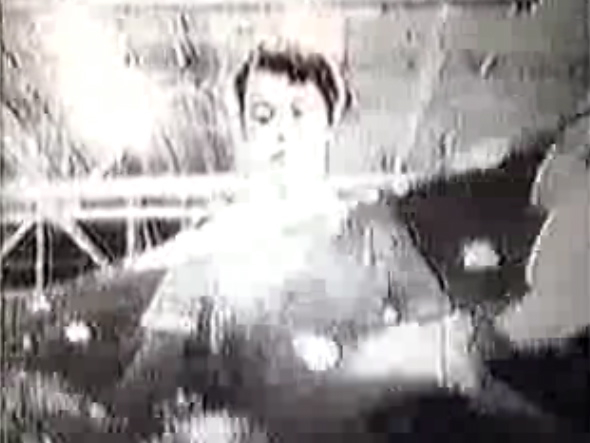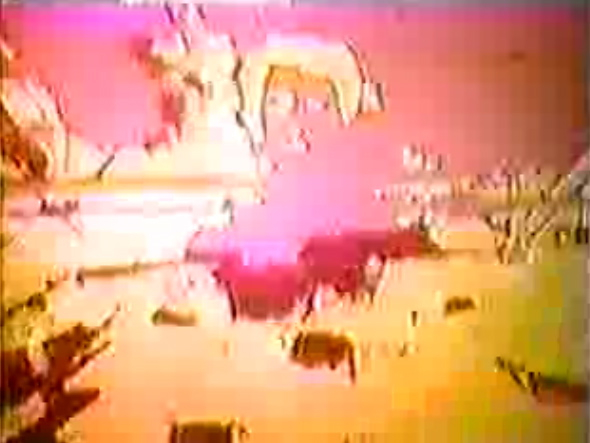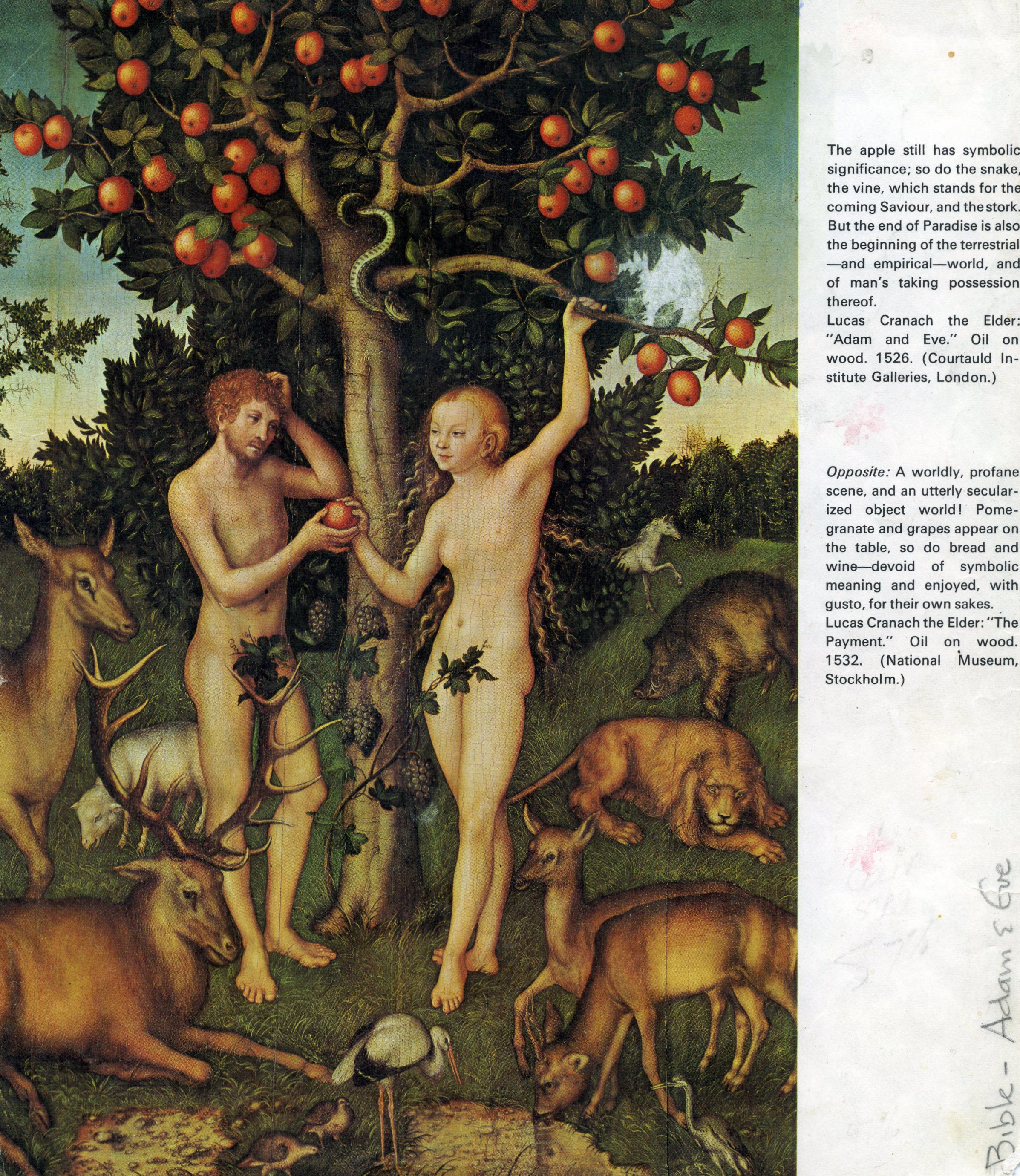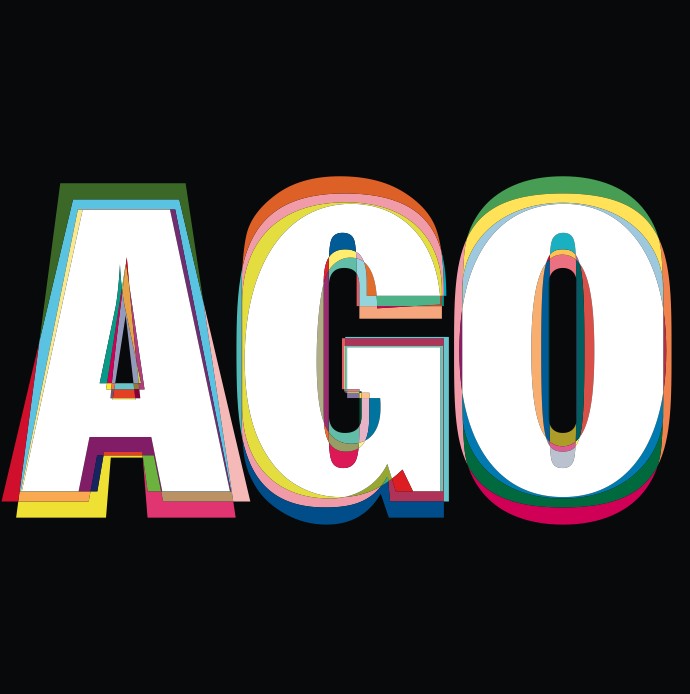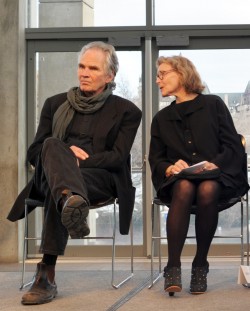Part of Winter 2012
The 2011 Governor General’s Award in Visual and Media Arts recipients Barbara Sternberg and David Rimmer have used a range of techniques to explore the medium of film throughout their respective careers. In particular, optical printing has allowed them both to achieve complexly layered imagery and intricate patterns of repetition, enabling each to craft their own unique poetics of cinema. Subjects in their work range from the minutia of daily life, such as women playing on a beach in Seashore (Rimmer, 1971), or people at work in factories in Variations on a Cellophane Wrapper (Rimmer, 1970) and Opus 40 (Sternberg, 1979), to meditations on life and death as in C’est La Vie (Sternberg, 1997) and Migration (Rimmer, 1969).
We are especially excited to open the program with the world premiere of Sternberg’s latest film, in the nature of things (2011). Organized around a central image of the forest as a transitional space, the film continues her exploration of dialectics: the human and the natural world, young and old, living and dying. From its layering of images upon images and frames within frames, to its rich colour palette and dense polyrhythms, it is a film that demands to be experienced rather than simply watched.
BIOS:
“The Vancouver experimental filmmaker David Rimmer is one of Canada’s best-known and most internationally acclaimed film artist. His frequently contemplative films investigate both the nature of the film medium and the quality of perception, and go beyond the structuralist/materialist approach to film: they explore the structure of the medium, yet simultaneously operate on a metaphoric or poetic level.
Rimmer emerged as a young visionary in the late sixties with Square Inch Field (1968) and Migration (1969), two films that, in the words of film critic Tony Reif, celebrate “the interconnectedness of all things.” His films of the early seventies — Surfacing on the Thames (1970), Variations on a Cellophane Wrapper (1970), The Dance (1970) and Seashore (1971) — drew acclaim for incorporating anonymous stock footage and thus taking structural film in new directions.
Rimmer moved temporarily to New York and, between 1971 and 1974, worked with a variety of media including video, dance, performance, installation and film. His films of this period were concerned with the unfolding of time, a theme best exemplified by Real Italian Pizza (1971), which condenses six months of New York street life into 12 minutes. He returned to Vancouver in 1974 and made Canadian Pacific (1974) and Canadian Pacific II (1975), which helped establish him as one of the world’s foremost cinematic artists.
In the early eighties, Rimmer took a four-year hiatus from filmmaking to teach film and video at Simon Fraser University. He marked his return with Bricolage (1984), which established him as a master of the collage aesthetic; it also personifies Rimmer’s characteristic technique of slowing down the viewer’s perception of images and events. Rimmer also began to experiment more with video in the eighties and his most compelling and intricate work of this period — As Seen on TV (1986) and Divine Mannequin (1989) — represents the hybridization of video and film.
Rimmer’s more recent films — most notably Black Cat White Cat It’s a Good Cat if it Catches the Mouse (1989) and Local Knowledge (1992) — have merged his philosophical and aesthetic preoccupations in a striking, stylistic mix of documentary and diary, infused with the insistent interrogations of image and epistemology that are evident in his earlier work.” Peter Morris, The Canadian Film Encyclopedia
On David Rimmer: “The Vancouver filmmaker lets the medium direct the action, then he sifts through the frames, layering texture, sound and colour. The result: a poem – an impression of a person, place or moment in time; an ode to the qualities of film.
Rimmer is one of the most important experimental filmmakers working in Canada today and is a key figure in the avant-garde film movement. His earliest works were created with found footage that he scratched, looped, coloured, rear-projected and refilmed. Through his impressive career, Rimmer has continued to be driven by a desire to understand images and the people and places they speak of.” Canada Council for the Arts
See > “David Rimmer: Fringe Royalty”, in Inside the Pleasure Dome: Fringe Film in Canada, Mike Hoolboom, second expanded edition, Coach House Press, Toronto, 2001, pp. 222-233.
http://mikehoolboom.com/r2/section_item.php?artist=152
Toronto filmmaker Barbara Sternberg has been making films since the mid-seventies. Her films have been screened widely across Canada as well as internationally at the Pompidou Centre in Paris, Kino Arsenal in Berlin, The Museum of Modern Art and Millennium Workshop in New York, and the Ontario Cinematheque, Toronto. Her work is in the collection of the Art Gallery of Ontario and the National Gallery of Canada. She has been a visiting artist at a number of Canadian universities and galleries including the University of Guelph, Nova Scotia College of Art and Design, Dunlop Art Gallery, as well as the Universite d’Avignon, and the School of the Art Institute of Chicago. In 2011, Sternberg was made a Laureate of the Governor General’s Award in Visual and Media Arts.
Sternberg’s film work combines reflections on the medium itself with social issues and universal questions of how we experience reality, how we as humans are situated in the world. Films are themselves experiences, realities. Her films work at the intersection of film and life- questions of vision, perception, motion and temporality. Although her main practice is film, Sternberg has worked in other media including performance, installation and video.
Sternberg has been active in a number of fronts in Toronto, teaching at York University, working for Canadian Filmmakers’ Distribution Centre, serving on Toronto and Ontario Arts Council juries and committees, helping to organize the International Experimental Film Congress (May 1989), and was a founding member of Pleasure Dome, artists’ film and video exhibition group. She wrote a handbook and conducted workshops on Media Literacy for high school teachers. She recently organized the “Association for Film Art” (AFFA) to actively support and promote awareness and appreciation of film art. While living in the Maritimes, Sternberg co-founded Struts, an artist-run centre in Sackville, New Brunswick.
Sternberg wrote a column, “On (experimental) Film” for several years for Cinema Canada, and has written essays on artists and on filmmakers. As well, she has written on the status of film art in galleries and museums—an issue on which she has conducted symposia and lobbied vigorously. http://barbarasternberg.com/
On Barbara Sternberg: “Toronto filmmaker Barbara Sternberg never thought of herself as an artist when she first started to play with her father’s 16 mm camera. Everything she produced at the time was for personal enjoyment and record-keeping. She just liked doing it.
Sternberg is now recognized as one of Canada’s most distinctive and innovative media artists. What comes through in her work is passion and soul; a sense of wonder and hope; and an invitation to immerse oneself intellectually and emotionally. Summing up her aesthetic position in three words – daily, observational, messy – she has a rare ability to see and show the human condition.” Canada Council for the Arts
See > “Barbara Sternberg; Transitions”, in Inside the Pleasure Dome: Fringe Film in Canada, Mike Hoolboom, second expanded edition, Coach House Press, Toronto, 2001, pp. 46 — 55.
http://mikehoolboom.com/r2/section_item.php?artist=152
LIFT and Pleasure Dome present No Reading After the Internet:
Thomas Bernhard’s The Voice Imitator: 104 Stories as selected by Barbara Sternberg
Wednesday, February 22, 7 PM Free @ LIFT, 1137 Dupont Street
Barbara Sternberg in attendance
http://noreadingaftertheinternet.wordpress.com/2012/02/08/thomas-bernhards-the-voice-imitator-104-stories-as-selected-by-barbara-sternberg/
In conjunction with Pleasure Dome’s world premiere presentation of Barbara Sternberg’s in the nature of things (2011) a selection of excerpts from Thomas Bernhard’s The Voice Imitator: 104 Stories have been selected by Sternberg to be read aloud and discussed by participants.
No Reading is a salon series that aims to provoke theoretical illumination on particular art works and the broader scope in which they exist. No Reading means to offer an engaged pedagogical space where participants can retrace the steps used in constructing understanding, productively challenging individual and collective ways through the realms of language and interpretation. To participate in No Reading is to invoke an exuberant not-knowing, seeking out moments of collective illumination.
The central image of in the nature of things is the Forest–sometimes fearful, sometimes a refuge, always mysterious–and the multiple associations and myths embedded in it. But, unexpected moments, intensified fragments, catch us unawares: the present confronts us. in the nature of things continues Sternberg’s examination of the oppositions played out dialectically and enmeshed in our experience of living: culture/nature, experience/representation, belonging/destroying, communal/individual, innocence/danger, young/old, living/dying. This is an autumnal film–twilight–a film of old age. Just as the Forest is a transitional space, so Old Age is a transitional time.
Thomas Bernhard’s The Voice Imitator is a darkly comic work. A series of parable-like anecdotes—some drawn from newspaper reports, some from conversation, some from hearsay—this satire is both subtle and acerbic. What initially appear to be quaint little stories inevitably indict the sterility and callousness of modern life, not just in urban centers but everywhere. Bernhard’s text is a central reference in Sternberg’s in the nature of things and these short excerpts will provide a lens through which to read Sternberg’s film and her filmmaking practice more generally.
Please note that the film will not be screened at the salon.
Thomas Bernhard (1931-89) was an Austrian novelist, playwright and poet. Bernhard, whose body of work has been called “the most significant literary achievement since World War II,” is widely considered to be one of the most important German-speaking authors of the postwar era.
No Reading After the Internet (Toronto) is supported by the Liaison of Independent Filmmakers of Toronto.

